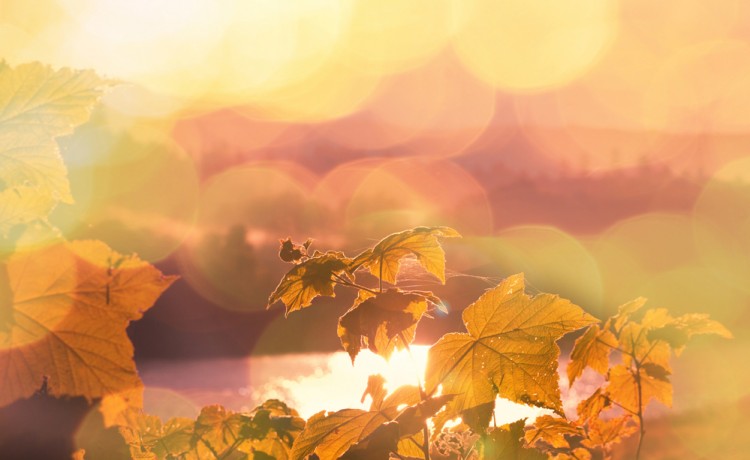
Autumn Light
By Richard Rosen, September, 2013
I have, hanging in my south-facing office window, four prisms. In the summer, when the sun is high in the sky, no direct light shines through the window, so the prisms hang forlorn, beautifully cut pieces of glass bereft of their true purpose. Come the end of August, though, as the sun swings lower in the sky, then the angle of its light reaches the window and illumines the prisms. Suddenly the small room is filled with rainbows of all different shapes and sizes, and I know autumn is on its way.
Traditionally in yoga, autumn is a time of new beginnings. We read in the seventeenth-century Gheranda Compendium (gheranda samhita): “The practice of yoga should be commenced… in the spring or autumn. By doing so we attain success.” Spring and autumn in India are cool and dry, not hot like summer or rainy like the monsoon season, so the perfect kind of weather for practice. But autumn is also a time for “bringing in,” of harvesting, when (as it’s said) we reap what we’ve sown, to then enjoy the fruits of our labors. Indeed the Sanskrit word for autumn, sharada, implies that what’s been planted is now “ripening.” So now is a good time to look back at your last 12 months of practice and “harvest” what you’ve learned, and maybe bring that friend or relative, who’s always talking about getting into yoga, to her first class.
But the rainbows also remind me about the nature of light. Everywhere in all cultures, ancient and modern alike, light is a symbol of consciousness. We often think of our inner “world” as a metaphor for the outer, but yoga tells that it’s just the opposite. It’s the outside that stands for the inner, and the deeper we penetrate “inside,” into consciousness, the greater the reality we find. The sun in the sky then, the source of our life on earth, is in truth a symbol for our “inner” sun, the Self.
Far too much in our modern practice, we focus on the “outside,” as the physical asanas dominate our day-to-day work. But traditionally asana was never the point of the practice. It was always and only a preparation for breathing and meditation, for our search to uncover and revel in the light of the inner sun. So this is the time of year we might also, if we don’t already have one, establish an “inner” meditation practice. We’ll find that just like the reds and blues and violets spreading across my room, we too are all the “colors” of the “rainbow,” expressions of the subtle light of the immaterial Self refracted through the prism of nature.
For the next few months, in the brilliant sunlight of the East Bay, my room will every day be lighted by the rays of the sun scattered through the prisms. But come March, when the sun starts its yearly ascent, the colors slowly disappear as the angle of light no longer catches the window. What happens then? That’s a subject to come back for in the spring, vasanta, the “brilliant” season.

